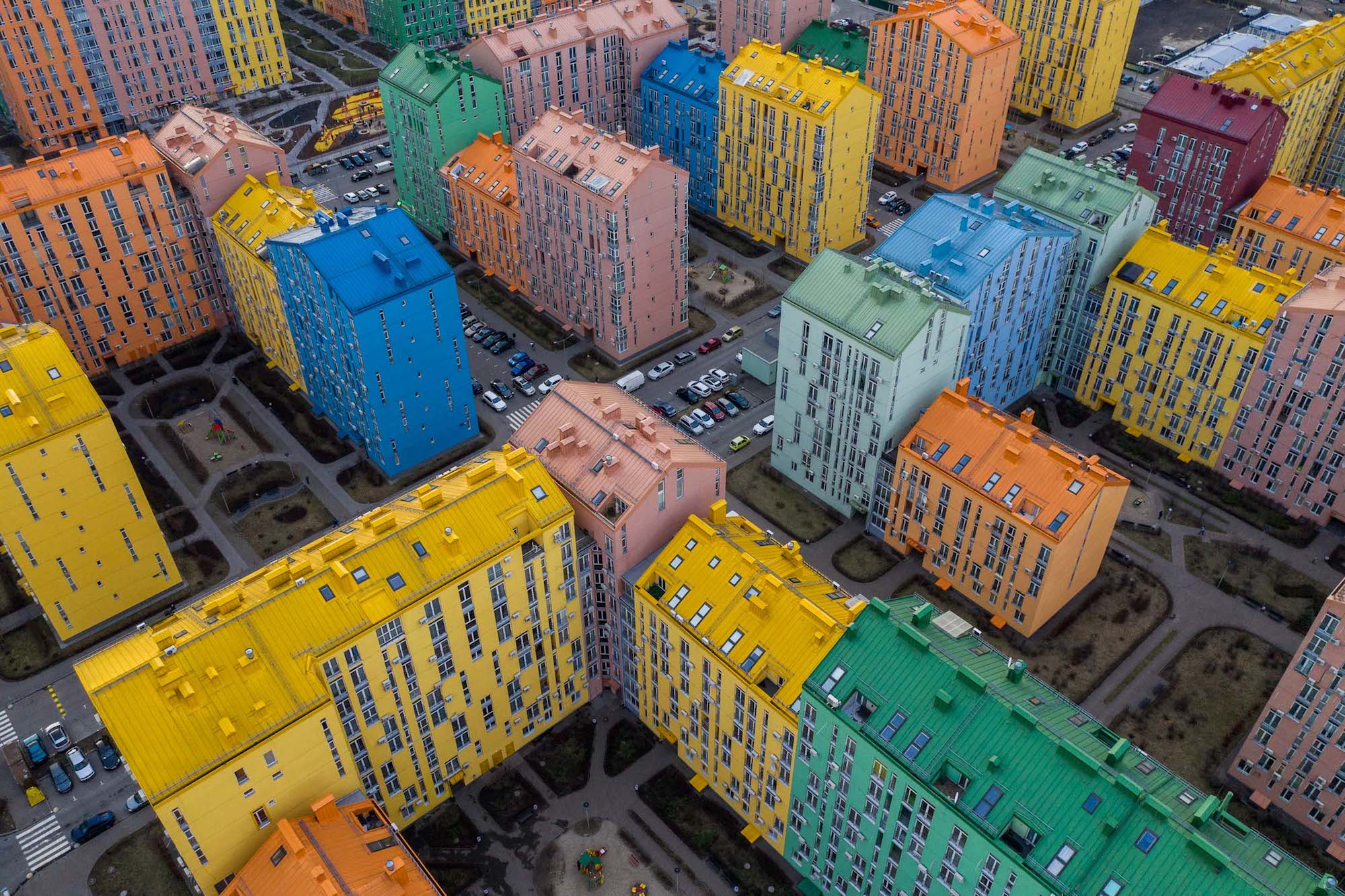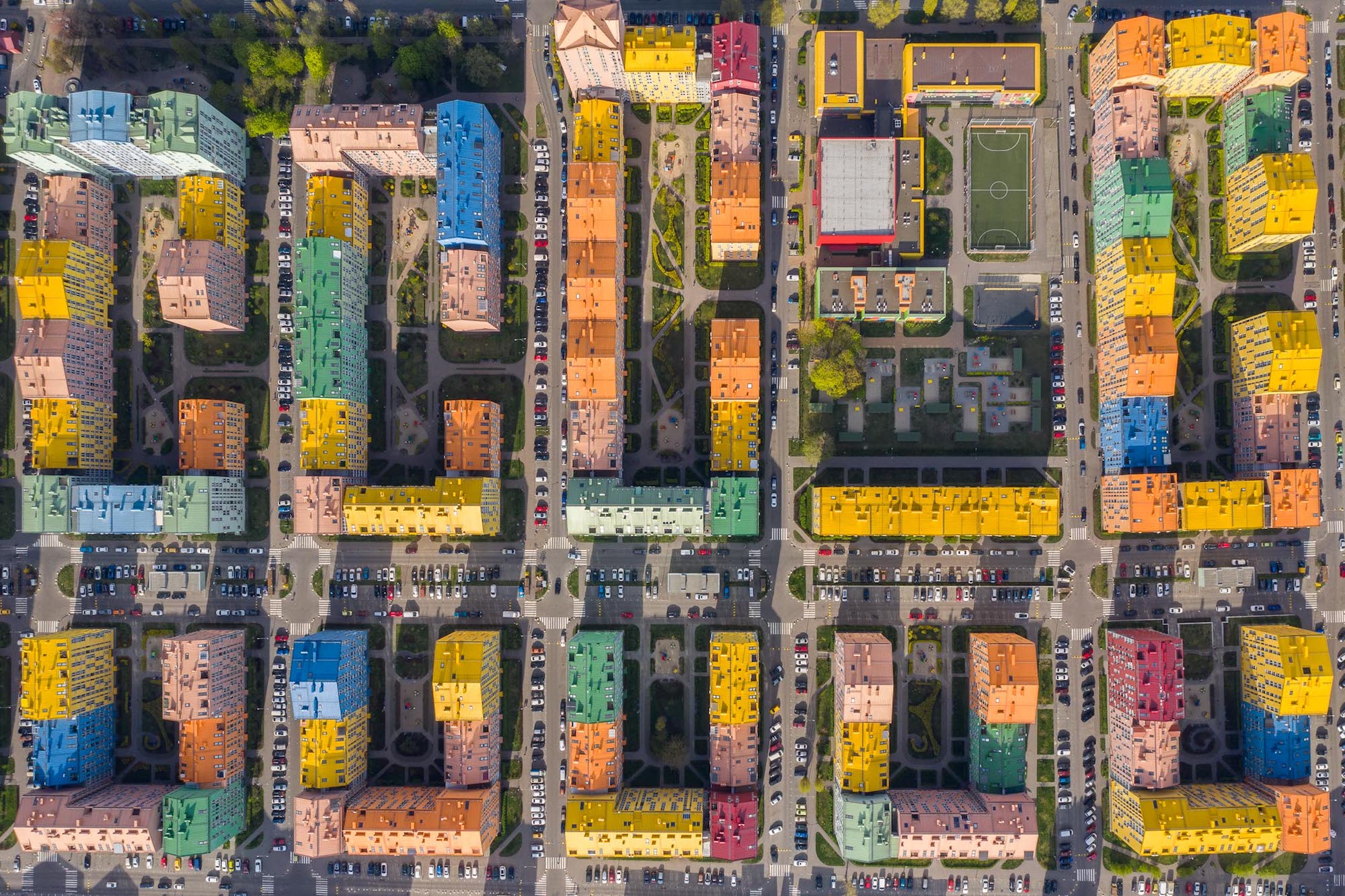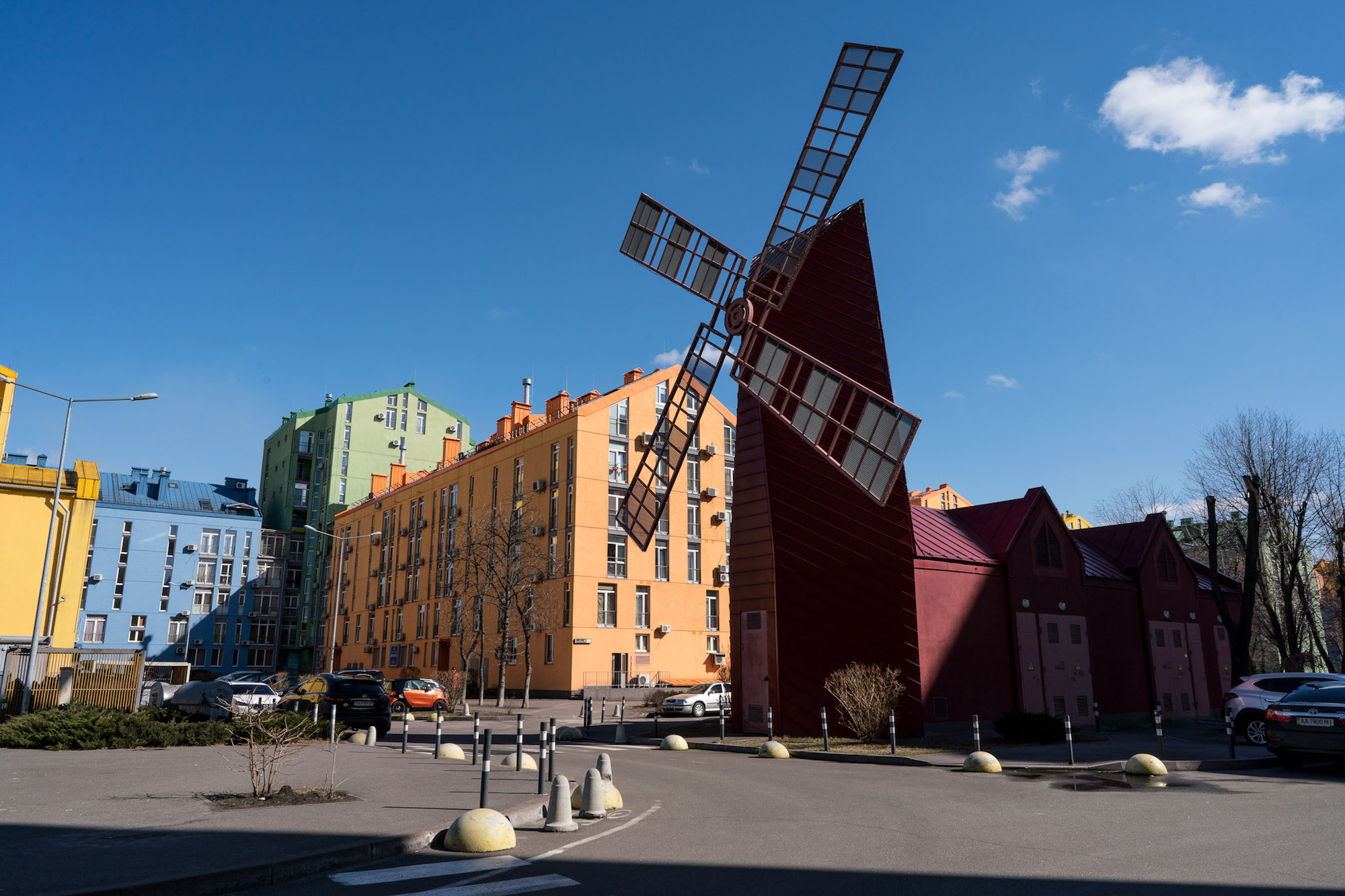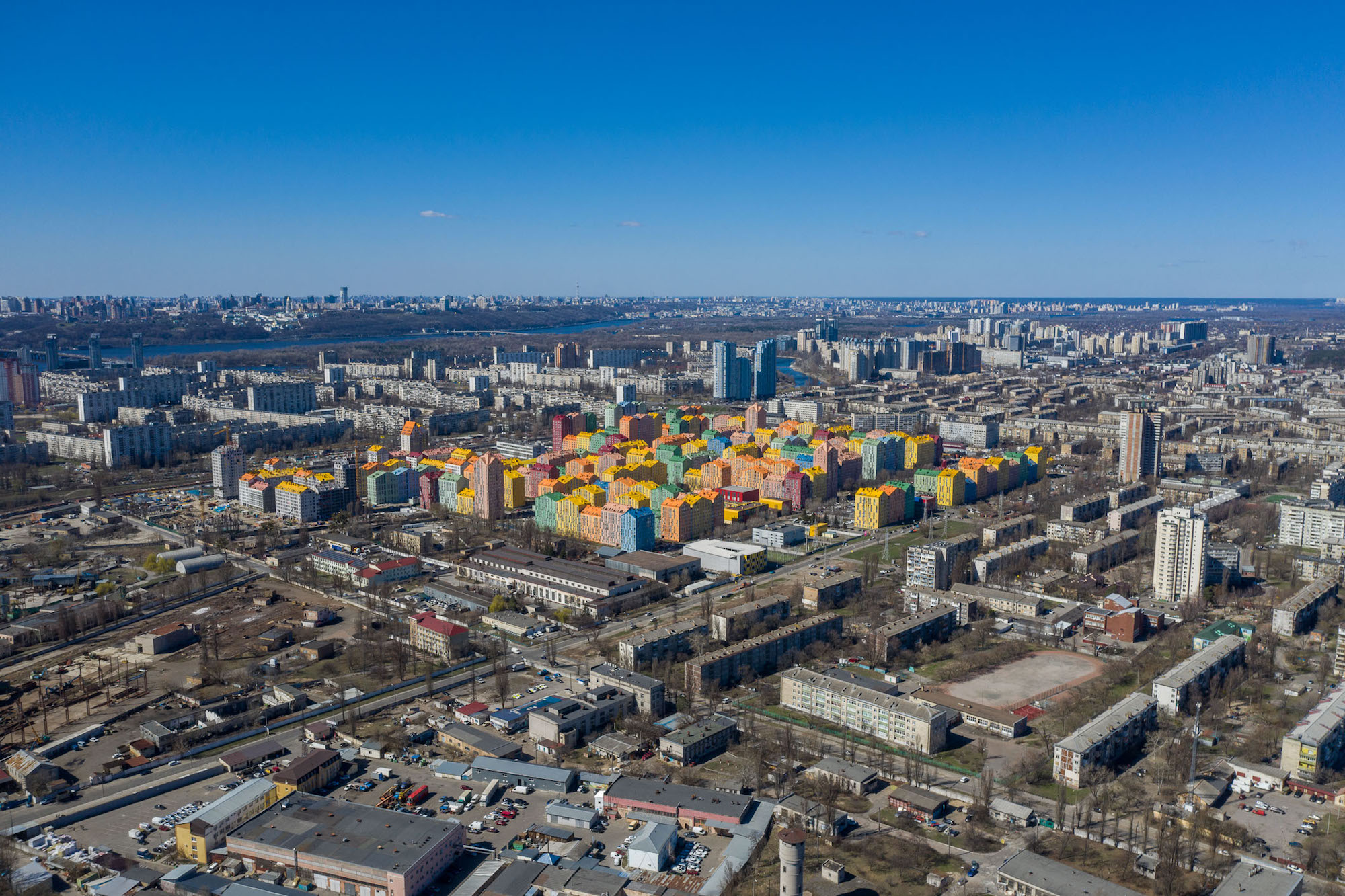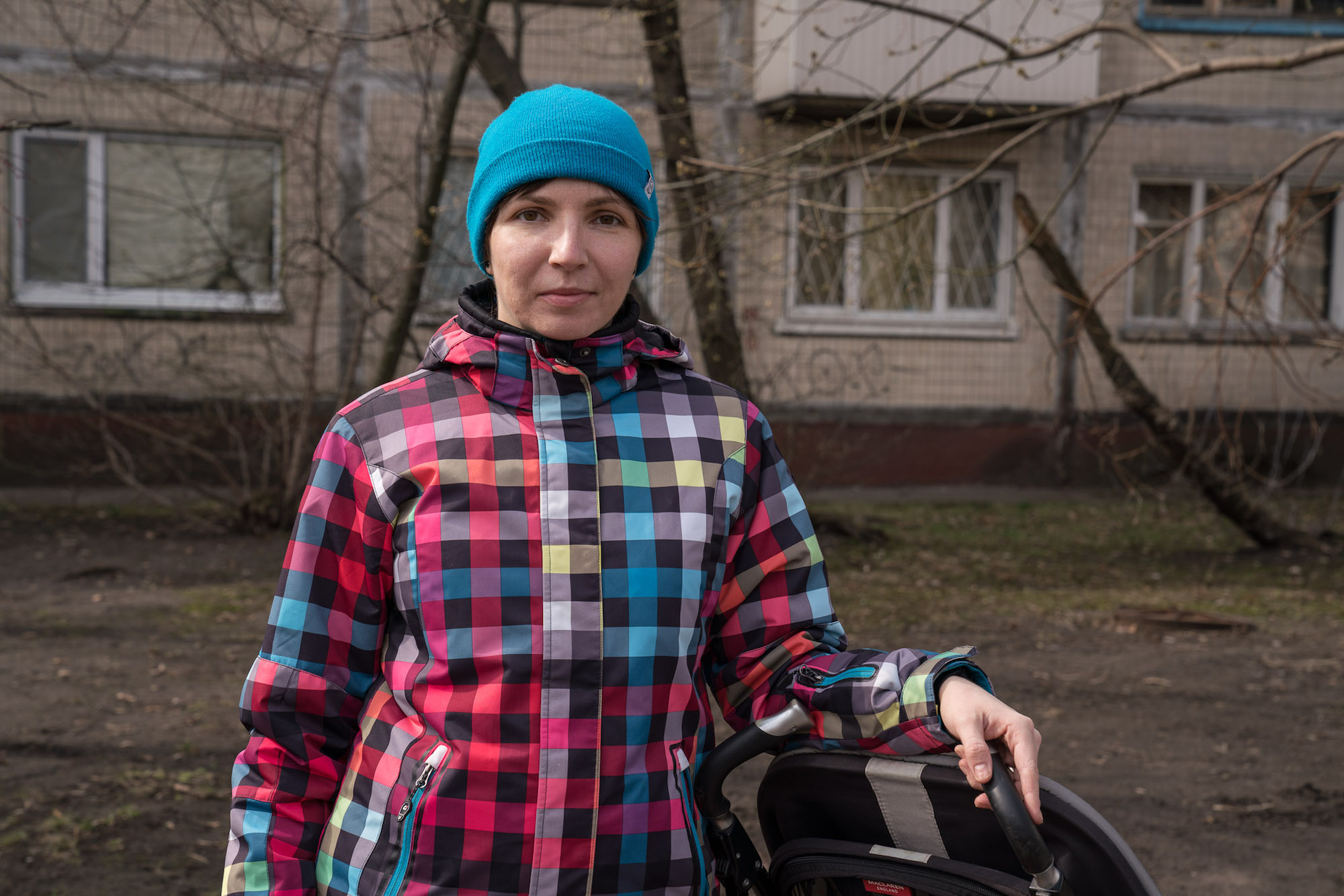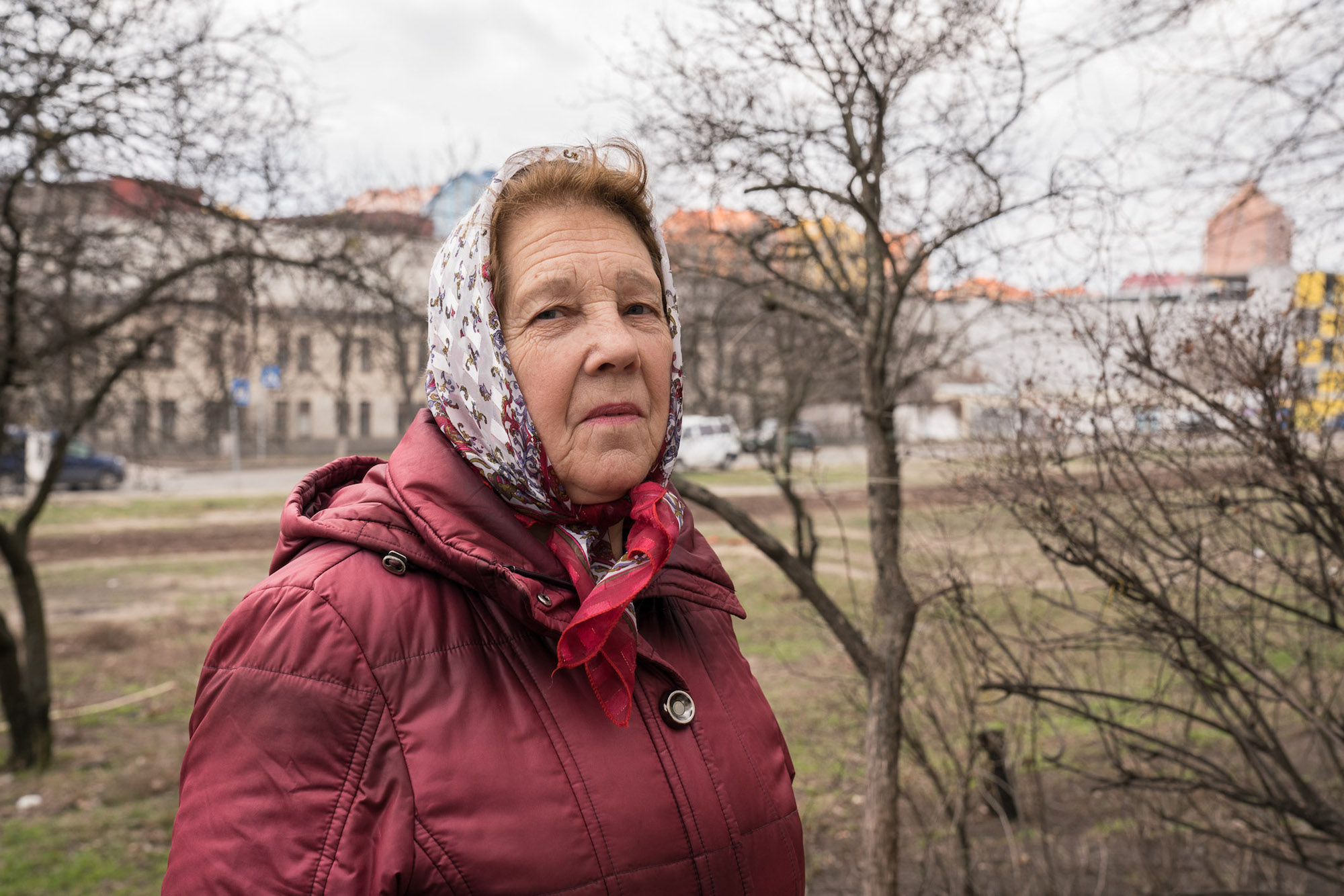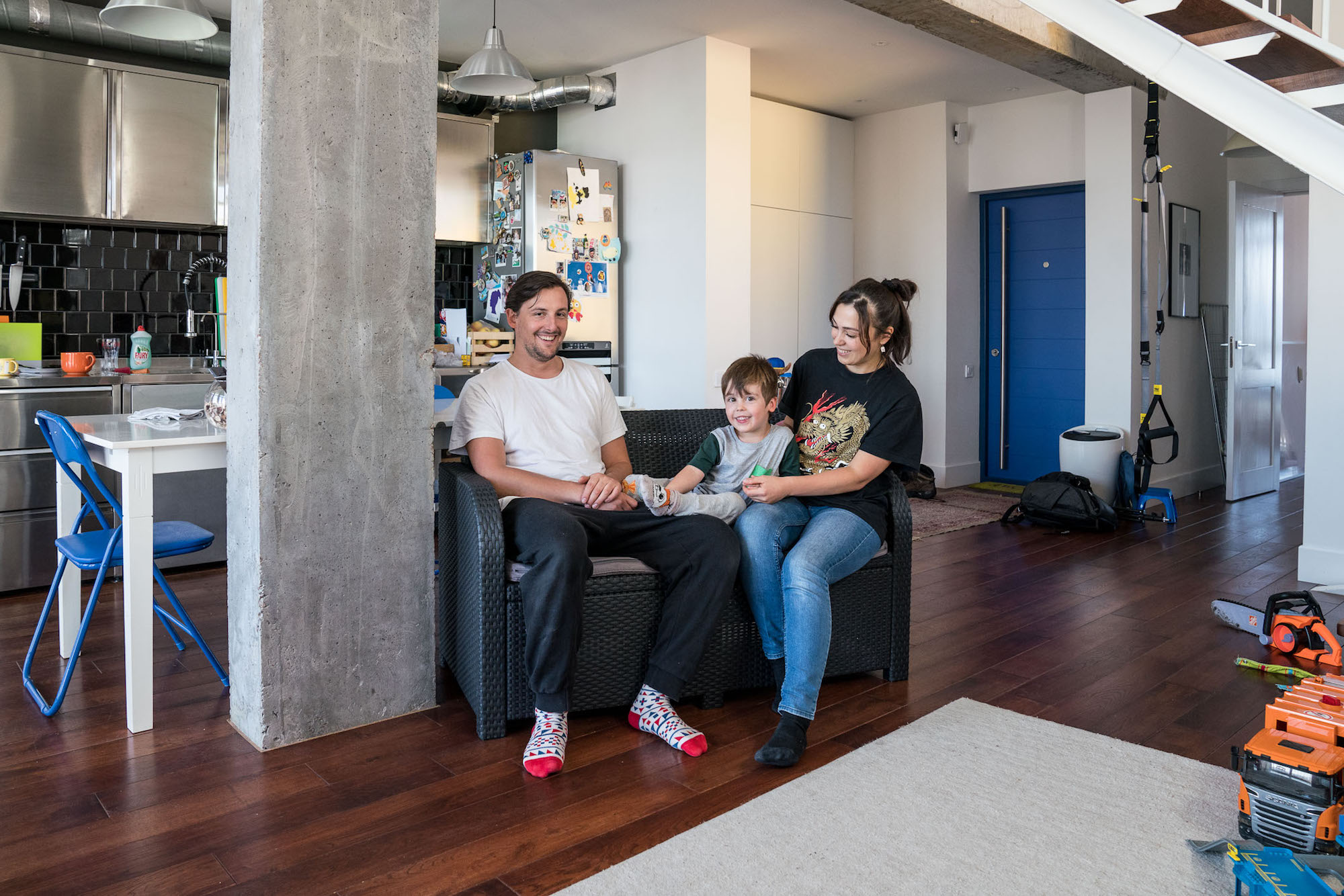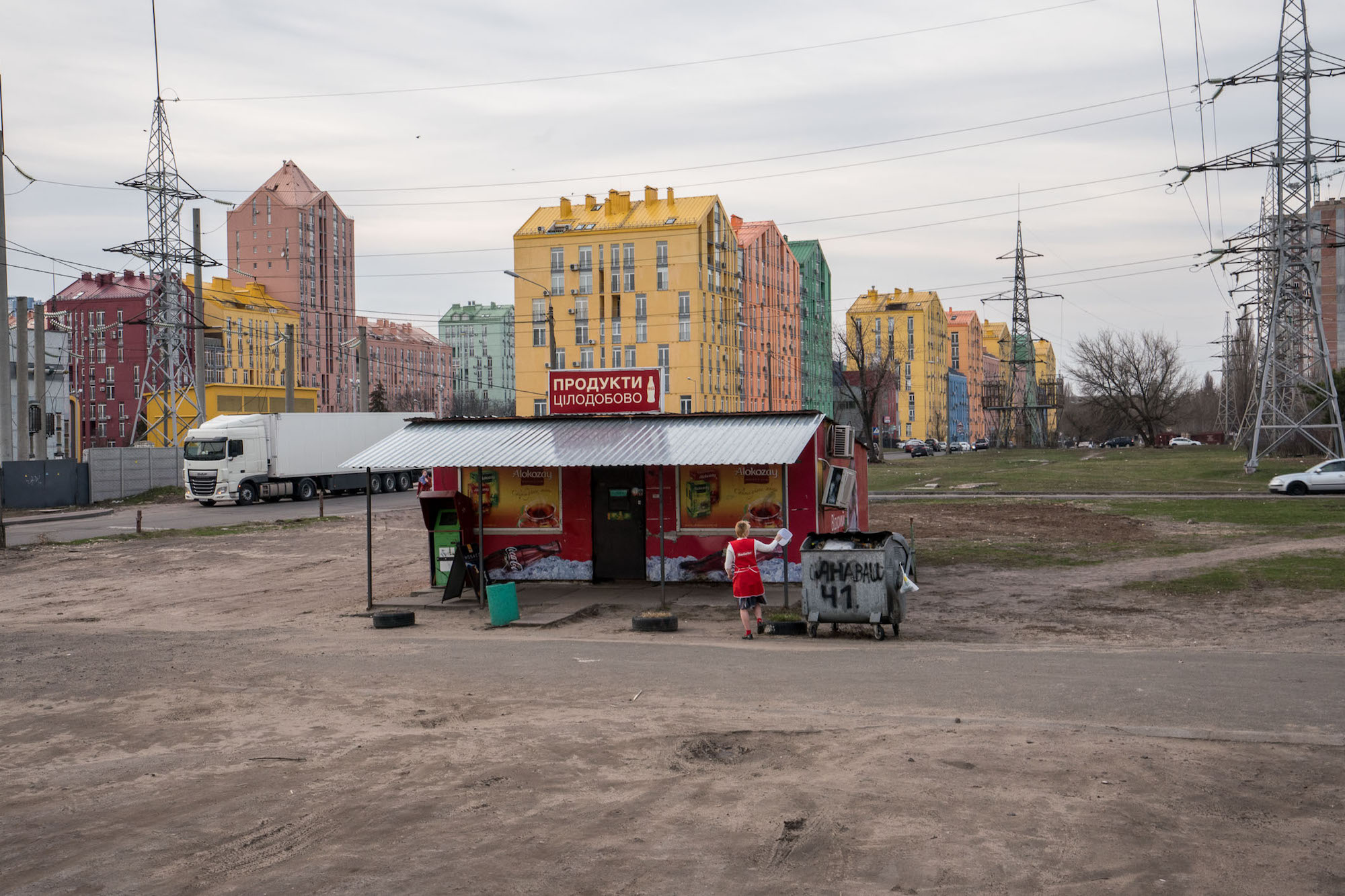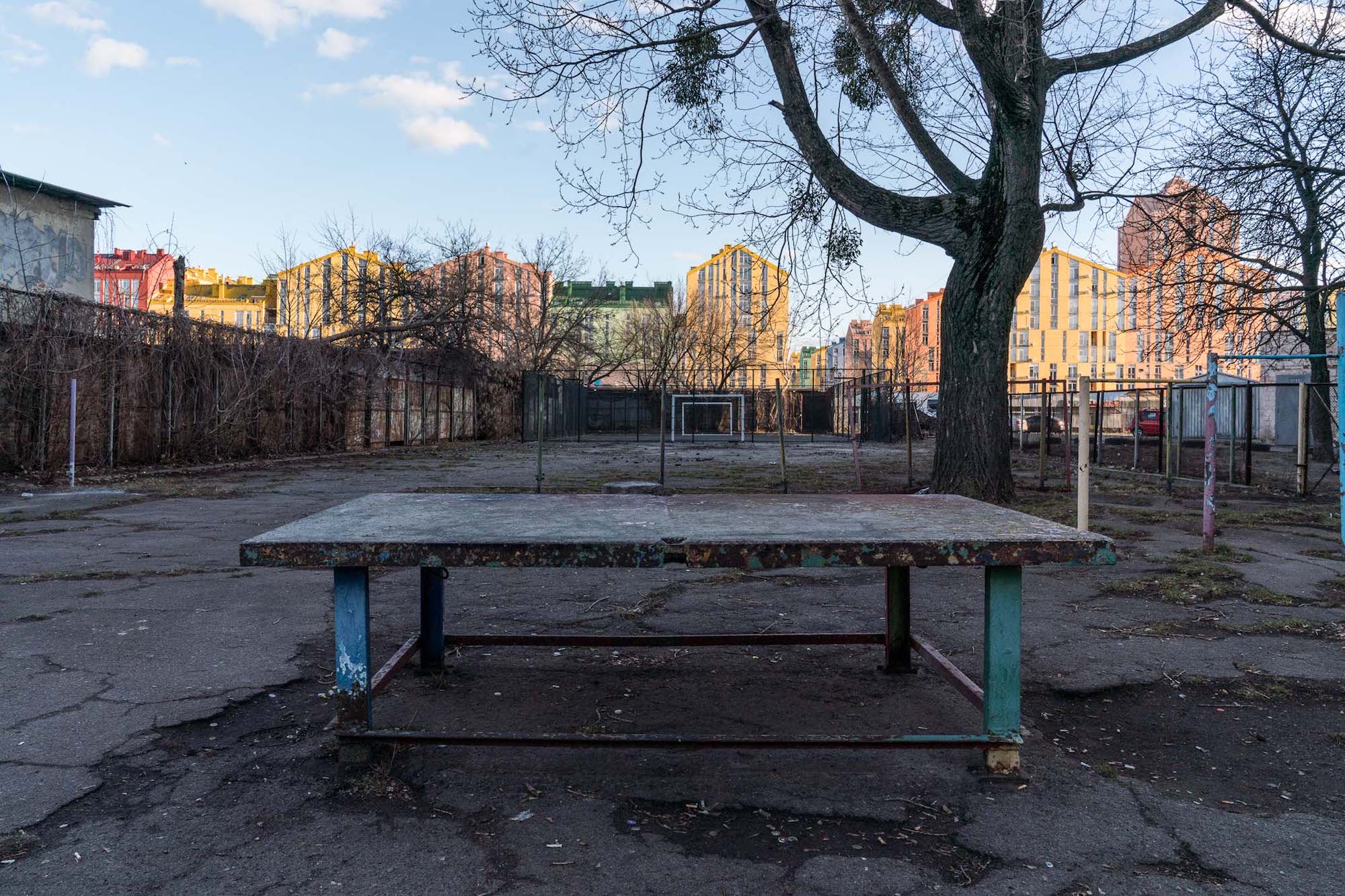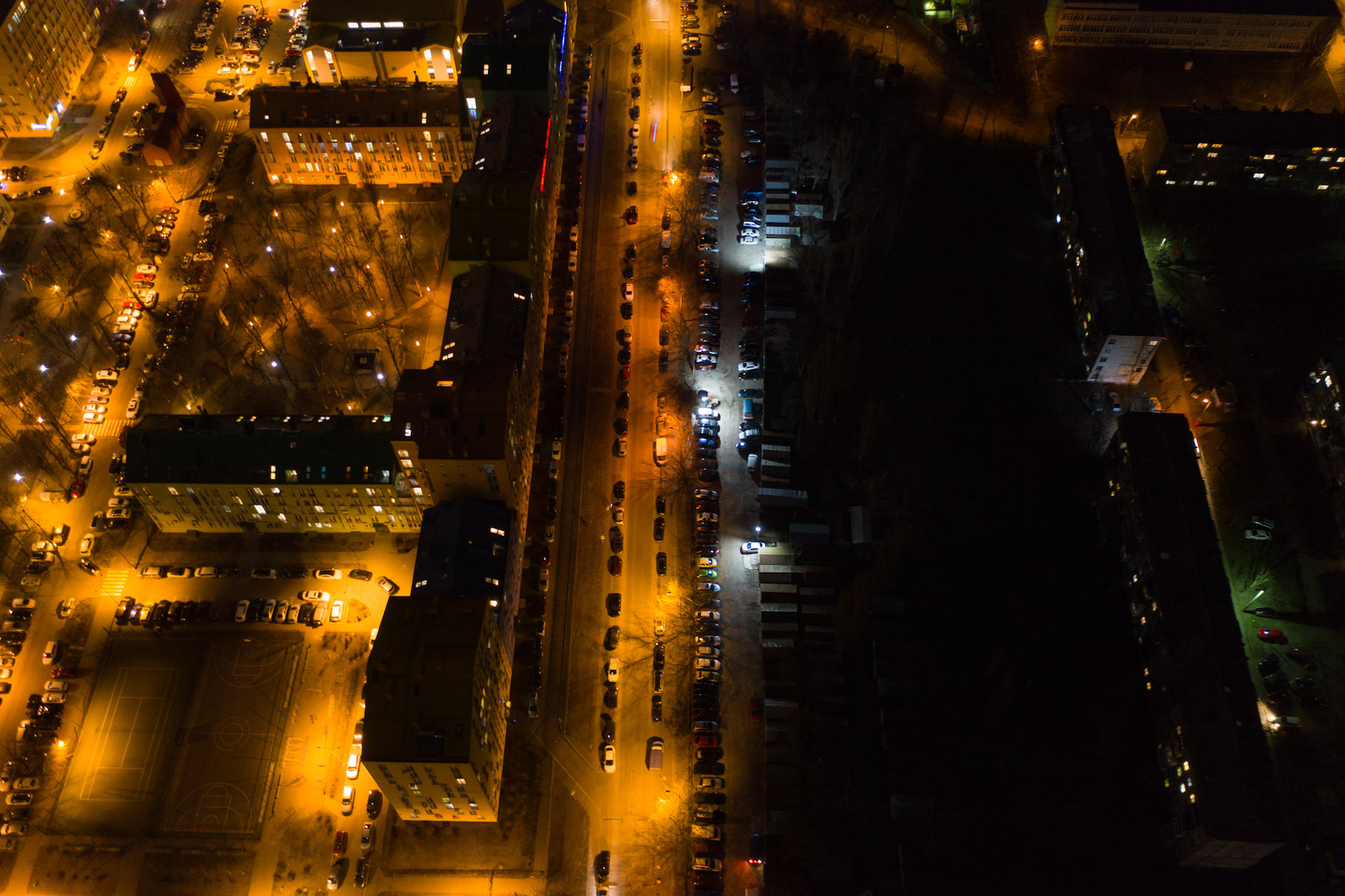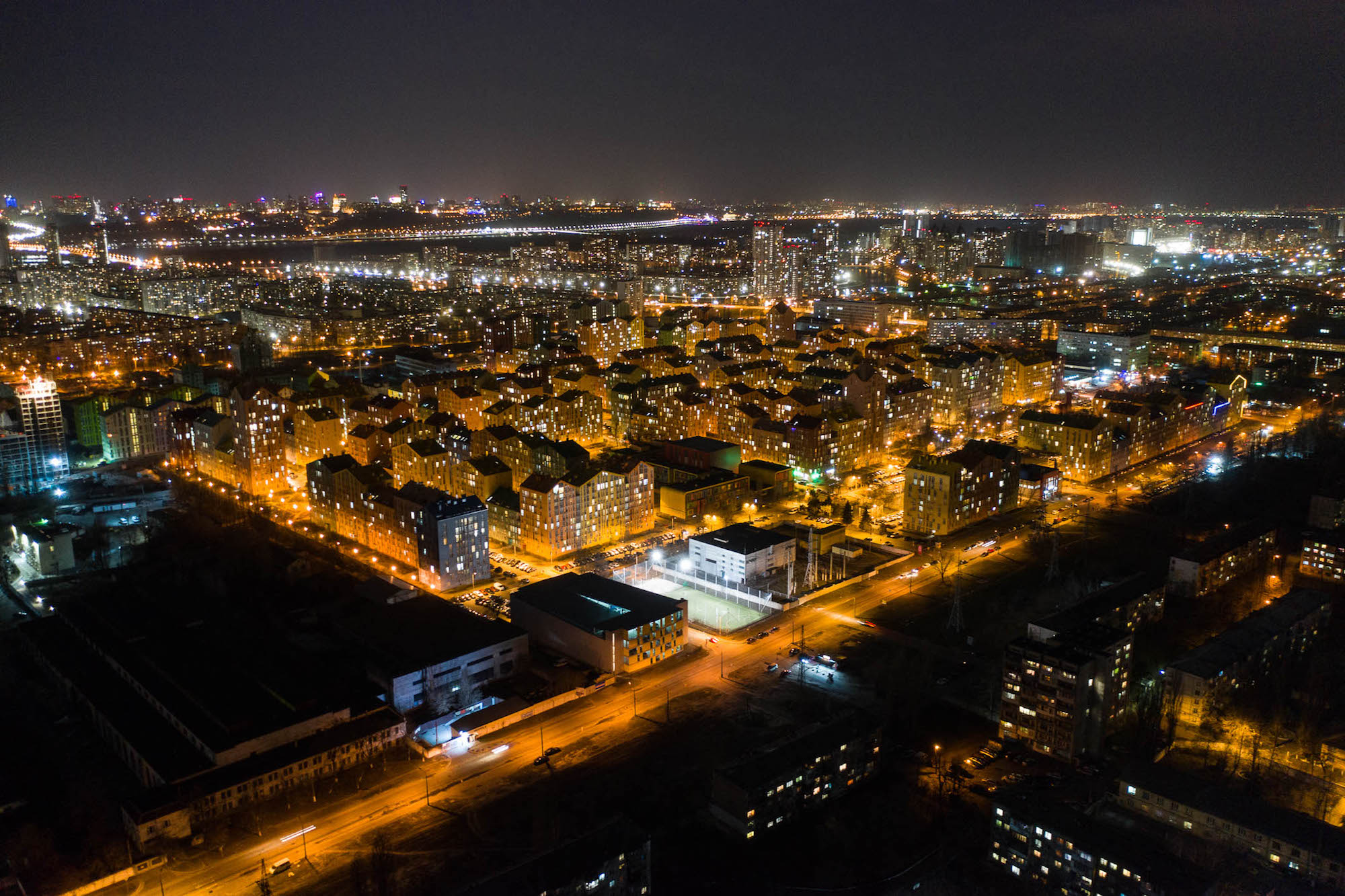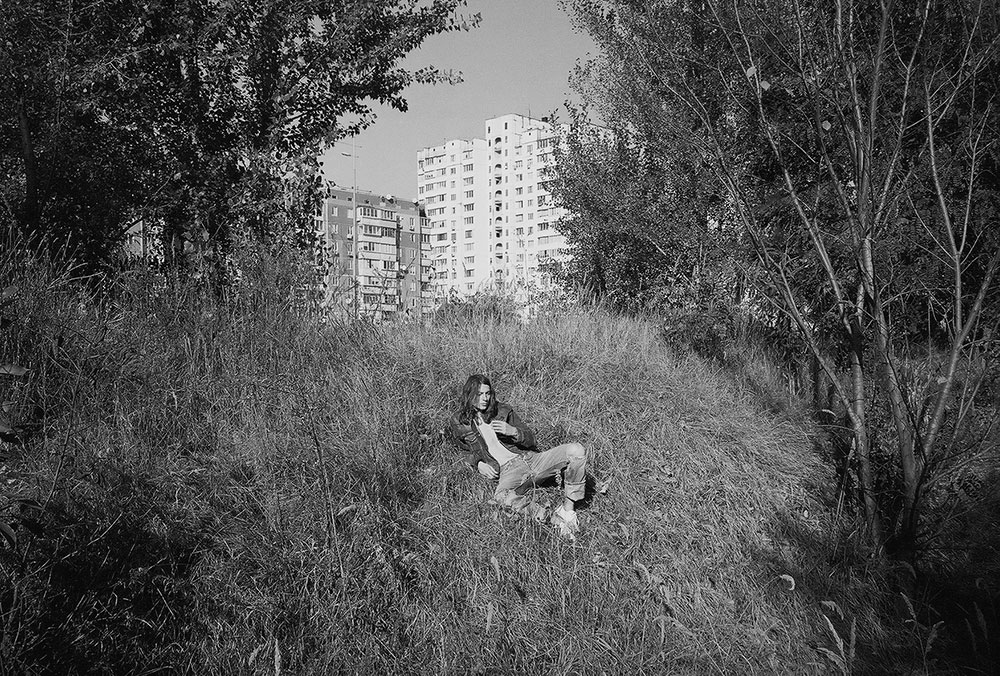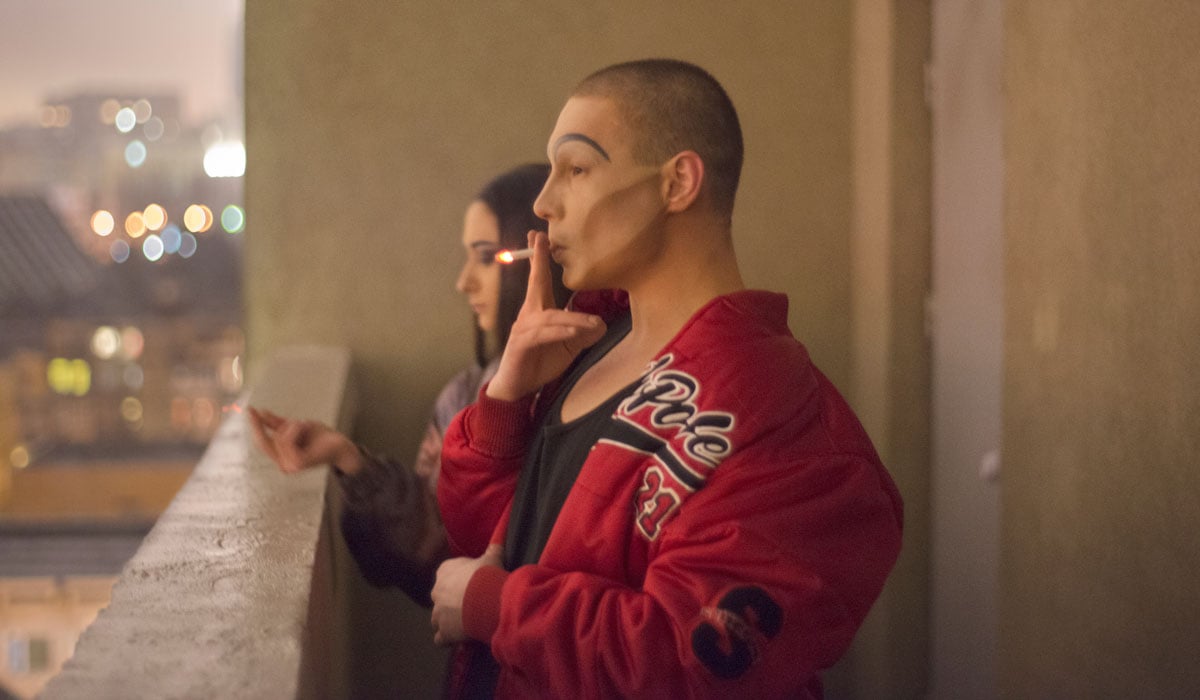A nation’s tensions are laid bare in Kyiv’s colourful city-within-a-city. Welcome to Comfort Town
The election on Sunday of comedian Volodymyr Zelensky as the nation’s new president has shown just how deep dissatisfaction with the status quo runs in Ukraine. In one corner of Kyiv, a housing development tells the story of generational divisions and the uneasy search for a workable future among the country’s youth.
Glance out of the aeroplane window as you descend into Kyiv’s Borispol airport and you are likely to spot a 40-hectare explosion of rainbow-coloured concrete on the ground below. This is Comfort Town, erupting from its drab surroundings like Lego on a shabby grey carpet.
Comfort Town’s 180 low-rise apartment buildings are indeed inspired by children’s building blocks; a playful response to the sprawling 1950s and 60s communist-era housing that encircles them. The secured grounds operate as a city-within-a-city, housing everything needed for modern life, from shops and restaurants to schools and gyms.
“Your little slice of Europe in Kyiv,” declares the brochure. Indeed, for the most part, its 8,500 apartments and manicured courtyards have been embraced by a generation of young families and urban professionals who feel culturally closer to Europe than to the country’s Soviet heritage.
Ukraine is a country struggling against endemic corruption, suffocating poverty, chronic depopulation, and a gruelling war with Russia-backed separatists. Stifled by a powerful elite unwilling to relinquish control, much of the country has failed to modernise in its 28 years of independence. In this context, islands of modernity like Comfort Town raise the important question of whether such developments are a precursor to wider progress in the country, or a symptom of a system incapable of change.
Conceived in the aftermath of the 2008 financial crisis, Comfort Town was built on the site of a disused rubber factory on Kyiv’s Left Bank. Confusingly located to the right of the Dnieper river, the Left Bank is often derided as the less desirable side of the city, thanks to its lack of landmarks, poor transport, and endless Soviet-era housing projects, now some of the most deprived neighbourhoods in the city. Despite this, Comfort Town has proven incredibly popular, claiming the title of “Ukraine’s most successful development” (in terms of unit sales) since independence.
Unlike many older estates, the buildings and common spaces in Comfort Town are well maintained. Responsibility is shared among residents through service charges, democratic voting rights, and a Facebook group with nearly 10,000 members. People take collective responsibility in a way that is uncommon elsewhere in the city.
“In the Soviet Union, people didn’t have to take responsibility, because somebody else did,” explains Alina Dvorzhanska, 30, a property manager and interior designer who works regularly in Comfort Town. She tells me it’s normal for common areas in older buildings to be uncared for. “The younger generation wants to live in new developments because the neighbourhood thinks differently. They care because they know no one else will.”
“The younger generation wants to live in new developments because the neighbourhood thinks differently. They care because they know no one else will”
By isolating itself from the outside, Comfort Town has also become a refuge for some residents who have been subject to racism elsewhere. Neuro Lloyd, a black Zimbabwean who emigrated to Ukraine six years ago to study medicine, has been violently attacked in other parts of the city eight times. He receives verbal abuse on an almost almost daily basis. “In Comfort Town,” he says, “I haven’t had any of those problems. I feel so much more comfortable walking around, especially at night.”
Although beyond the reach of the city’s poorest, the complex is still considered affordable for those on middle incomes. For many residents, however, living in Comfort Town is about more than economics. Tetiana Donets, 23, a film producer who lives and works in Comfort Town, says she loves where she lives but is under no illusions about what her home represents.
“Most people moving here want to be as far away from the past as possible,” she says. “I think [the developers] are trying to achieve a revolution of happiness. You have your bars, any type of food, you can get your hair and nails done, you have doctors. You never have to leave.”
Meanwhile, in the surrounding, poorly-maintained krushchevki — low-cost apartment blocks of three to five stories built under Soviet leader Nikolai Krushchev — older and poorer citizens survive with little in the way of state support, surrounded by a multitude of social problems.
After independence, Ukraine’s property market was privatised and most residents became the owners of the apartments in which they lived. However, shared responsibilities, previously the domain of the state, were not reorganised effectively.
“After the Soviet Union collapsed,” says Maria, 76, who lives in a krushchevka overlooking Comfort Town, “the government stopped maintaining these buildings. My building is 60 years old. Pipes are breaking and the building is falling apart. Most residents are retired. They build all these new places but they don’t take care of where we live. Here, absolutely nothing changes.”
Increasingly, the younger and more able that remain in these buildings are searching for a way out. Leisia, 32, is a marketing manager who lives in a block close to Comfort Town with her husband and young son. She tells me most of her neighbours are retired, social tenants, or alcoholics. “We wanted to buy in Comfort Town,” she says, “but now we are moving to Borispol, outside Kyiv; we don’t have the patience to live in these old buildings anymore.”
Since the fall of the Soviet Union, Ukraine has suffered near-constant political, economic, and social turmoil, preventing it from developing effective social support systems. Much of the country’s state and local infrastructure still operates on the foundations of a three-decades-old empire. A 2017 Ernst & Young poll rated Ukraine as the most corrupt country in Europe and joint eighth in the world, alongside Mexico. Meanwhile, a 2018 Global Wealth report ranked it 123rd out of 140 countries for median wealth, below Bangladesh, Cameroon, and Nepal.
Anger at the state of the country has led to two revolutions in the past 15 years. The last, the Euromaidan Revolution of 2014 — which saw more than 100 protesters killed and then-president Viktor Yanukovich flee to Russia — was driven by the country’s young, who envisioned a different future for themselves than that offered by the corrupt, pro-Russia incumbent. Ukraine’s sixth president, Petro Poroshenko, came to power shortly after the revolution on the promise of wide-ranging reforms and a move towards Europe.
Since the fall of the Soviet Union, Ukraine has suffered near-constant political, economic, and social turmoil, preventing it from developing effective social support systems
Euromaidan marked a change in the attitude of Ukraine’s youth — officially defined as those under 35, encompassing some 40 per cent of the population — uniting a generation with little or no memory of the USSR in their desire to define the country in which they live. Despite the economy suffering a sharp decline since the revolution, Ukraine’s youth subcultures, technology startups, and creative industries have flourished, with the fashion and IT sectors in particular receiving international acclaim.
But while this has led to some modernisation of the business environment — the tech sector successfully lobbied for legislation to eliminate illegal police raids on offices, for instance — such progressive energy has been unable to permeate the state machine in a way that is visible on the streets, and most feel utterly let down by Poroshenko’s government.
Indeed, a 2018 IRI poll showed just 20 per cent of under-35s see a positive future for themselves in Ukraine. Millions have already voted with their feet: the country’s population has dropped 20 per cent since independence, a reduction of 10 million people. Between 2015 and 2017 alone, more than a million left, and a 2017 relaxation of visa restrictions within the EU’s Schengen Zone is only adding to this.
It was in this atmosphere of frustration and despair that 41-year-old actor and comedian Volodymyr Zelensky was elected Ukraine’s seventh president in a landslide victory on Sunday, winning 73 per cent of the vote. Zelensky’s only political experience had been playing a humble history teacher who unexpectedly becomes president in the popular sitcom Servant of the People. The show is a clever and damning critique of Ukrainian politics and is produced by Zelensky’s own production company, Kvartal 95.
Zelensky connected with young people in a way Poroshenko could not. In the first round of voting, he had four times as much support among 18-29-year-olds — as well as 14 times as many Instagram followers — and only fell behind Poroshenko with voters over 60. Ultimately, however, Zelensky’s unprecedented success came because he was not part of the existing establishment. Indeed, 68 per cent of people who voted for him in the first round said they did so as a protest against the status quo, rather than as an endorsement of his suitability as president.
An island of colourful modernity in a sea of dilapidated greyness, Comfort Town offers a suitable metaphor for progress in modern Ukraine. Divided along economic, social, and generational lines, the country is struggling to move beyond its troubled past and increasingly problematic present. Pockets of progress seem possible only through the building of walls, real and imagined, and the isolation of its proponents from their wider reality.
“It’s like any relationship,” says Olga Klymenko, 33, of moving on from the country’s Soviet past. She is head of communications at Procter and Gamble Ukraine and lives in Comfort Town with her husband and their four-year-old son. “You need to separate yourself. I think it’s healthy to block what has gone before and focus on the future.”
Klymenko’s husband, Andrii Lytvynov, 32, who is an IT entrepreneur, agrees: “We have to build a wall against the past. It’s bad, but we are young and hungry for something new.”
From the outside, it would be easy to criticise developments like Comfort Town for their segregating effects. By delivering life in a walled city to those most willing and able in society, they leave the most vulnerable on the outside and crystallise the socio-economic divisions already prevalent in the country.
Yet, by facilitating a step away from the past and offering protection from harsher conditions outside, residential bubbles like Comfort Town also offer some hope and a little progress to a generation that are essential to Ukraine’s future; a form of middle ground that is perhaps just enough to keep them from seeking a better life elsewhere. What remains to be seen is whether this new, progressive Ukraine will be able to extend beyond its self-imposed borders and resist the temptation of retreating further into itself.
Back in Comfort Town, Donets, the film producer, tells me she rarely goes outside the complex these days. “It guards you from all the greyness and the sadness outside. Every time I have to leave I get really uncomfortable. You get on a bus and suddenly it’s like: ‘Oh shit, there’s this.’”
